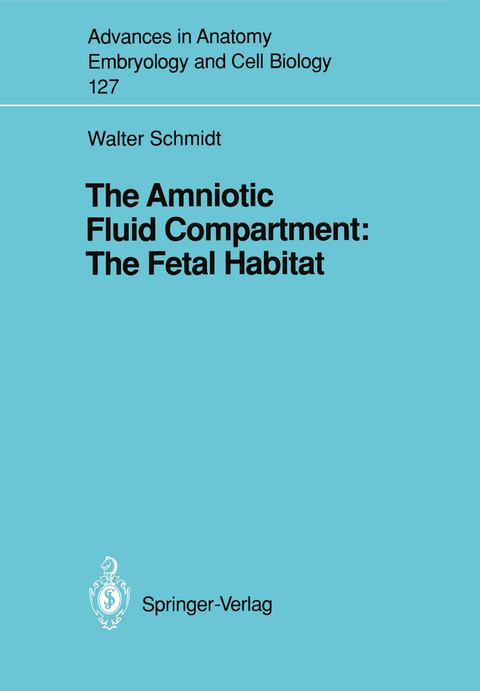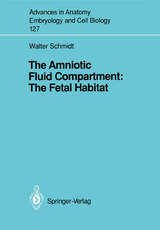The Amniotic Fluid Compartment: The Fetal Habitat
Springer Berlin (Verlag)
978-3-540-55162-1 (ISBN)
1 Introduction.- 2 Definition of Terms.- 3 Evolutionary Biological Prerequisites.- 4 Development of the Amniotic Fluid Compartment in Humans.- 4.1 Formation of Fetal Membranes (Chorioamnion).- 5 Histogenesis of Human Embryonic Membranes.- 5.1 Histogenesis of the Amnion.- 5.2 Histogenesis of the Intermediate Layer (Spongy Layer).- 5.3 Histogenesis of the Chorion.- 5.4 Amniotic Fluid.- 6 Limitation of the Amniotic Fluid Compartment at Full Term.- 6.1 Amnion.- 6.2 Intermediate Layer (Stratum Intermedium, Spongy Layer).- 6.3 Chorion.- 6.4 Interpretation of Glycogen and Lipid Storage in the Fetal Membranes.- 7 Permeability of the Fetal Membranes.- 8 Mechanical Properties of the Fetal Membranes.- 8.1 Rupture of the Fetal Membranes.- 9 Amniotic Fluid.- 9.1 Cells of the Amniotic Fluid.- 9.2 Non-Cell Components of the Amniotic Fluid.- 9.3 Chemical Analysis of the Amniotic Fluid Content.- 10 Exchange of Amniotic Fluid and Interaction Between Fetus and Amniotic Fluid.- 10.1 Fetal Kidneys.- 10.2 Fetal Integument.- 10.3 Umbilical Cord and Placenta.- 10.4 Digestive Tract.- 10.5 Lung.- 10.6 Fetal Membranes and Paraplacental Transport.- 11 Regulatory Mechanism.- 12 Summary.- References.
| Erscheint lt. Verlag | 10.8.1992 |
|---|---|
| Reihe/Serie | Advances in Anatomy, Embryology and Cell Biology |
| Zusatzinfo | VI, 100 p. 18 illus. |
| Verlagsort | Berlin |
| Sprache | englisch |
| Maße | 170 x 242 mm |
| Gewicht | 270 g |
| Themenwelt | Medizin / Pharmazie ► Gesundheitsfachberufe ► Hebamme / Entbindungspfleger |
| Medizin / Pharmazie ► Medizinische Fachgebiete ► Gynäkologie / Geburtshilfe | |
| Studium ► 1. Studienabschnitt (Vorklinik) ► Anatomie / Neuroanatomie | |
| Studium ► 1. Studienabschnitt (Vorklinik) ► Histologie / Embryologie | |
| Schlagworte | Gynäkologie • Gynäkologie / Frauenheilkunde • gynecology • Morphologie • Morphology • Perinatologie • perinatology • Pregnancy • Schwangerschaft • Schwangerschaft / Gravidität |
| ISBN-10 | 3-540-55162-X / 354055162X |
| ISBN-13 | 978-3-540-55162-1 / 9783540551621 |
| Zustand | Neuware |
| Haben Sie eine Frage zum Produkt? |
aus dem Bereich




